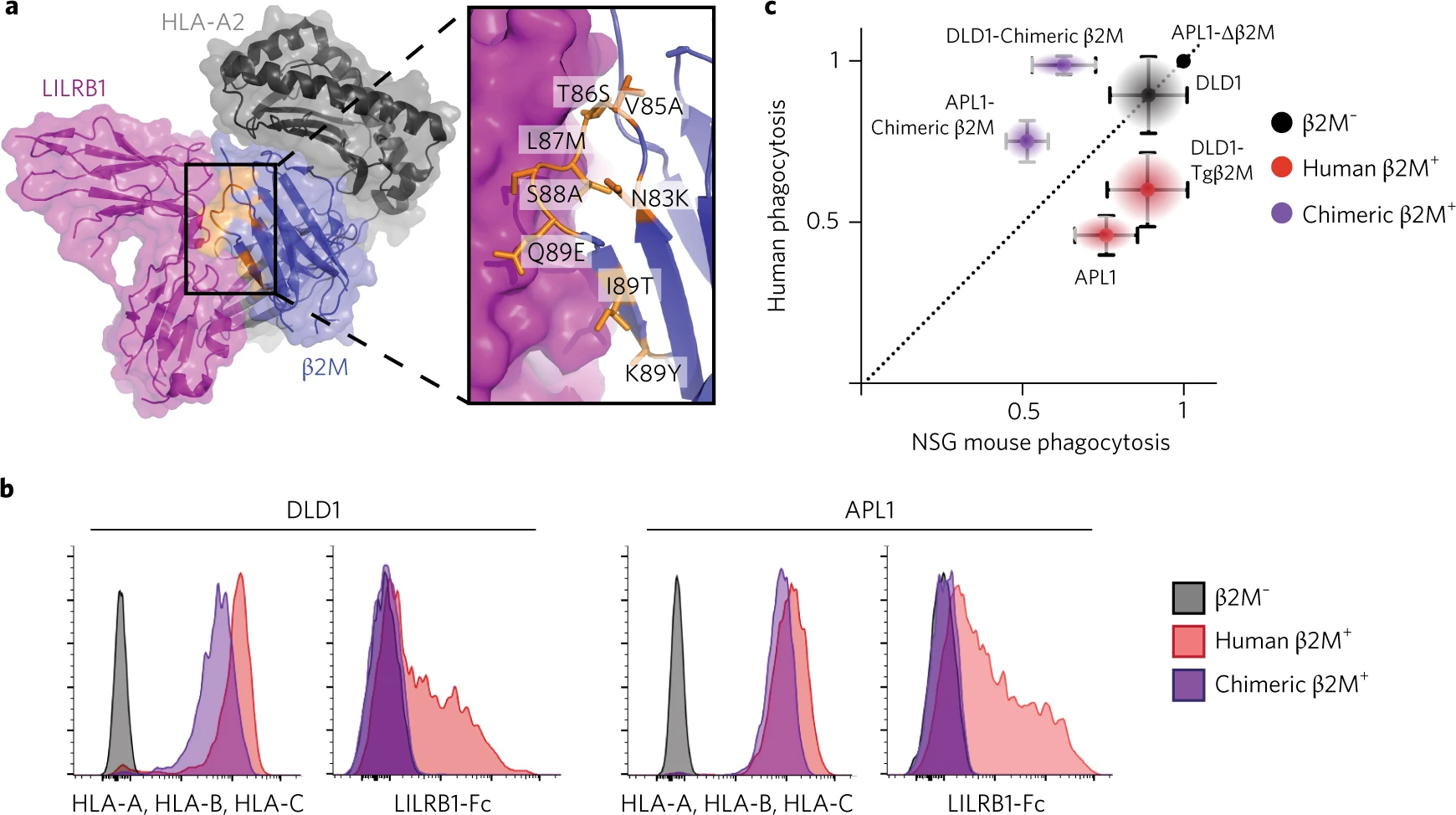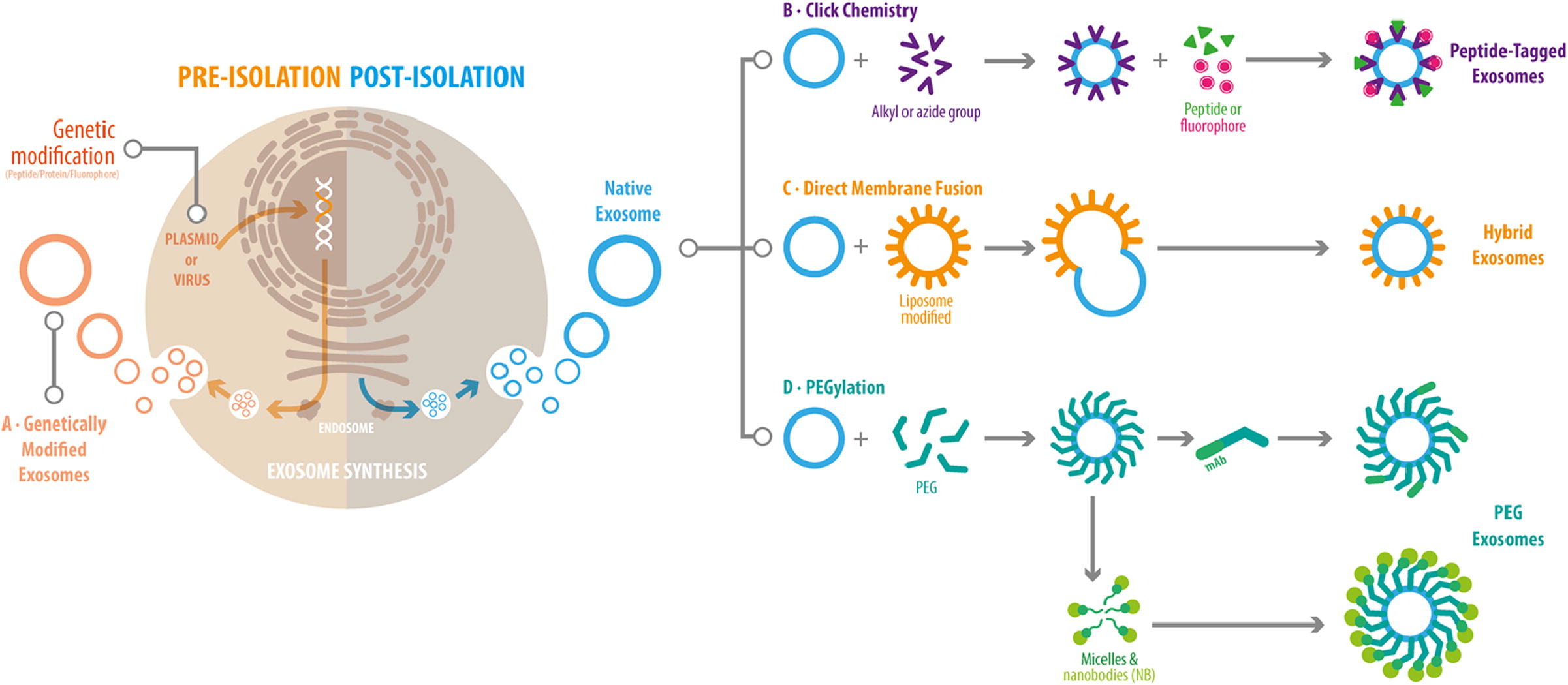β2M-Expressed Exosome Modification Service
β2M-Expressed Exosome Modification Service aims to enhance the in vivo stability and drug delivery efficiency of exosomes by expressing β2-microglobulin (β2M) on the exosomal membrane. This service is applicable to studies involving drug delivery, protein delivery, targeted therapy, and trans-barrier transport.
Exosomes, as naturally occurring nanoscale vesicles, exhibit excellent biocompatibility and intrinsic delivery capabilities, making them an increasingly popular platform for transporting various cargos such as RNA, proteins, and small-molecule drugs. However, during in vivo applications, exosomes face rapid clearance by the mononuclear phagocyte system (MPS), which significantly limits their potential in sustained delivery, trans-barrier trafficking, and precise therapeutic targeting.

Barkal, A. et al. Nat Immunol. 2018.
Figure 1. β2M confers species-specific protection against phagocytosis by macrophages.
β2M is the light chain component of Major Histocompatibility Complex Class I (MHC I) and is widely expressed on various mammalian cells. Studies have shown that certain tumor cells overexpress β2M and can evade immune clearance by binding to the leukocyte immunoglobulin-like receptor B (LILRB) on macrophages, thereby inhibiting their phagocytic activity. Leveraging this mechanism, expressing β2M on the exosomal membrane can simulate this immunoregulatory process, potentially prolonging the circulation half-life of exosomes and enhancing their utility as drug delivery vehicles.
Based on a variety of molecular biology platforms, MtoZ Biolabs provides β2M-Expressed Exosome Modification Service expressing β2M on the surface of exosomes to give exosomes immune escape ability, thereby extending their circulation time in the body, improving delivery efficiency, and reducing off-target uptake. Provide technical support for the construction of efficient and stable exosome carriers.
Analysis Workflow

Parada N. et al. Journal of Advanced Research. 2021.
Figure 2. Schematic diagram of the different strategies that exist to add modifications to the surface membrane of exosomes.
MtoZ Biolabs offers two well-established β2M modification strategies. Clients can select the appropriate method based on project needs:
1. Fusion Expression Strategy (Genetic Engineering)
Construct a fusion expression vector combining β2M and an exosomal membrane protein (e.g., CD63 or LAMP2B);
Transfect or infect exosome-producing cells with the constructed vector;
During exosome secretion, β2M is stably localized to the exosomal membrane surface.
2. Membrane Surface Coating Strategy (Chemical Conjugation)
Anchor recombinant β2M non-covalently to the exosomal membrane using hydrophobic tails, lipid anchors, or tag-mediated interactions;
This method does not require genetic modification of donor cells and is suitable for post-modification of existing exosome samples.
Next Steps (General)
Exosome Isolation: Via ultracentrifugation, size-exclusion chromatography (SEC), or nanofiltration;
Modification Validation: Confirmed using Western blot, flow cytometry, ELISA, and immunogold-labeled TEM.
Applications
Examples of suitable scenarios for the β2M-Expressed Exosome Modification Service:
Prolonging In Vivo Circulation Time
Effectively evades rapid clearance by macrophage-rich organs such as the liver and spleen, enhancing bioavailability.
Developing Low-Immunogenic Drug Delivery Systems
Especially suitable for the delivery of siRNA, miRNA, proteins, peptides, and small molecules.
Applicable to High-Immune-Activity Environments
Including tumors, the nervous system, and autoimmune conditions—improves delivery efficiency and target accumulation.
Assisting in Crossing Physiological Barriers
Enhances trans-barrier transport when combined with targeting modifications.
FAQ
Q. How is β2M modified onto the exosomes? Fusion expression or post-coating? Which method is more stable?
We offer two strategies: fusion expression and membrane surface coating. Fusion expression—where β2M is genetically fused with exosomal membrane proteins such as CD63 or LAMP2B—is the most commonly used method. It ensures stable integration of β2M during exosome biogenesis, with uniform expression and precise membrane localization, making it suitable for long-term applications and functional studies. The chemical surface coating method, while more flexible and ideal for modifying pre-existing exosomes, has relatively lower membrane anchoring stability and is better suited for short-term validation.
Q. Is β2M modification compatible with exosome cargo loading? Does it affect delivery efficiency?
Yes, β2M modification is highly compatible with the loading of various cargos (e.g., siRNA, miRNA, proteins, small molecule drugs). Since β2M localizes to the exosome surface, it does not interfere with cargo encapsulation or release mechanisms. We support both pre-loading and post-loading strategies in conjunction with β2M modification. Experimental results have shown no significant negative effects on cargo activity or delivery efficiency. In fact, due to prolonged circulation, overall delivery performance is often enhanced.
How to order?







